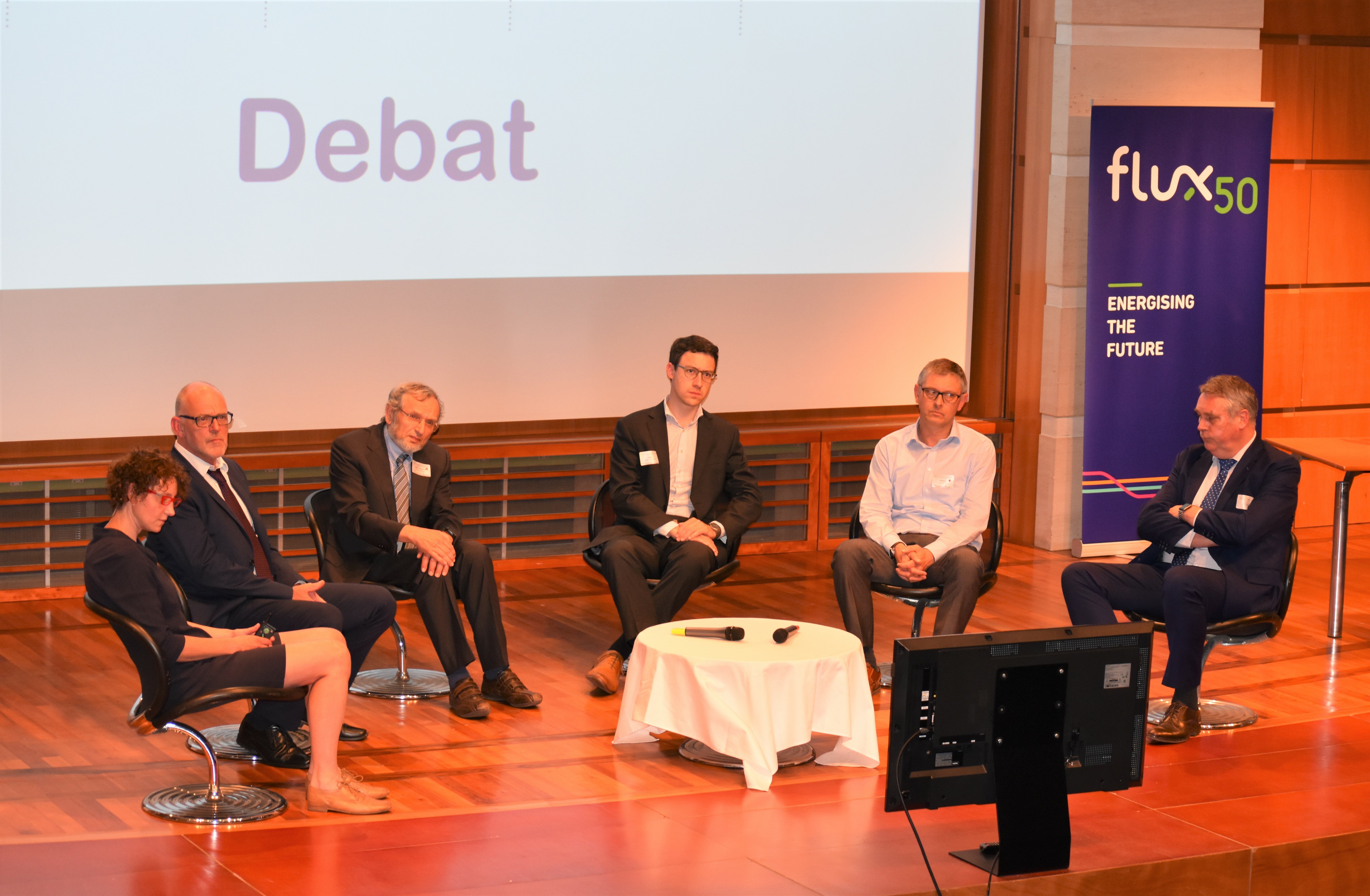Leen Peeters from STORY took part at the event “Energy transition: next steps?”
The event was organized by Flux50 and KBC and took place in KBC’s main building in Brussels

The big question of the day was what the position of gas is in a transition to 100% RES and if at all a 100% RES is feasible without gas. The speakers represented a diverse range of stakeholders with either direct business in gas or with expertise in renewables and transition. Gas power plants take a relevant position in the electricity production in Flanders. The planned phase out of today’s nuclear power plants must be compensated by other generation plants, which should by 2050 be nearly 100% RES. In the transition towards such scenario, the nuclear phase out as planned will cause supply shortages that will lead to an import of electricity either produced by nuclear power plant in France or by coal in Germany. The average CO2 emission in that case will not improve, it might even become much worse than today.
However, given the MERIT order, new gas power plants have challenges making a profitable business case and the question than is … who is stilling willing to invest in it. Although, new power plants are based on a kind of third generation of turbines with high flexibility in modulation range and in delivering peaks in very short timeframes, the challenges remain. Just take a typical sunny day with little wind. Belgian PV installation producing at full power and then early evening the sunset causes a 1000 MW drop in power production, just at the moment of increased consumption. While solar power plants or one thing … the upcoming increased amount of electrical vehicles is another challenge to cope with. Todays fleet can further increase by 20 with no major issue, unless all situated locally. Increasing by a factor 40 from today requires to adapt to slow charging as much as possible. Going for a factor 100 requires to move to smart car charging with local balancing. 100 means about 20% of all cars, hence substantial but not even that much. The STORY findings were presented with the focus on the challenges and potential of going bottom up: from a nanogrid as the Living Lab to the further roll out of a microgrid in the form of a LEC.
The concluding debate showed that the seemingly opposite points of view from the different speakers throughout the day, came together with still a lot of open issue to resolve but with a convincing closing on a transition requiring a role for (if possible green) gas. A remarkable day with an interested and active audience taking the discussion after the event till the closure of the building.
